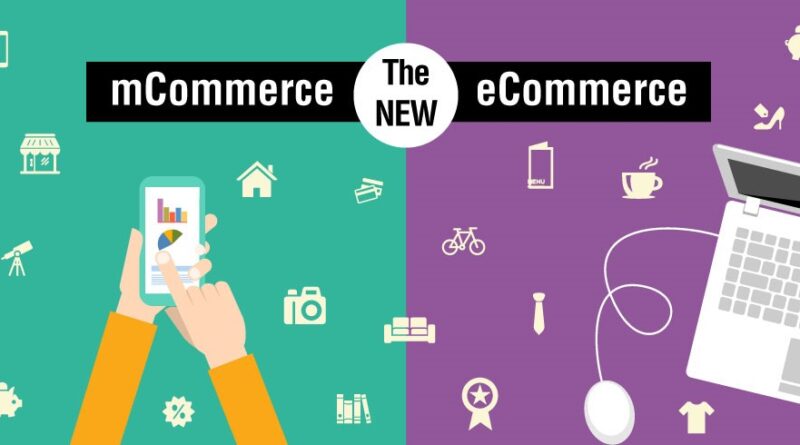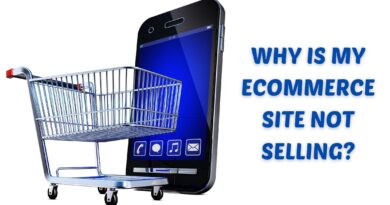M-Commerce vs. E-Commerce: What Holds the Future
The world we are living in today is far different from what it used to be, ten or even five years ago.
When the internet and smartphones started to blend in with our regular lives, it was a distant dream to integrate our lives with so much in-depth technology into everything.
However, the scenarios have changed considering we carry our 6inches glass screen device 24*7. And use it from necessities spread across ordering food, commuting, shopping, or face-timing a friend from another continent.
But with the revolution led by the internet, online users have become supremely tech-savvy in finding ways to hit the best deals online, shop smarter and bring the value of money.
With that comes the dynamic potentialities of m-commerce in present and future commerce. At the same time, every business is trying to upskill itself to keep its customers invested and hooked.
Now that companies realize the potential of mobile phones and how every little thing has transitioned from desktops to mobile phones, they are up for the challenge to make the best of this transition. The competition is real!
A study from smart insights reports around 1.7 million shoppers online use mobile phones and desktops for gaining information and catering to their shopping needs.
The numbers started climbing up in 2014 and since then, the mobile economy has appeared to be a premier purchase point.
Marketers started reflecting on whether they are taking care of the mobile needs efficiently. Well, now in 2021, the evidence for these mobile uprising graphs is right there- in your hands, while you read this article.
Table of Contents
What do we mean by E-Commerce?
While the term “e-Commerce” might seem to be a part of daily lives very recently, we trace back its emergence back in the early 1970s long before Google found its way to being our everyday acquaintance.
Back then when people carried the idea of finding daily commodities online primarily through desktops.
However, the terms have changed, labeling eCommerce as one of the most promising industries in 2021 and certainly after.
With the uprise of eCommerce platforms like Amazon or Alibaba, eCommerce has transformed how online businesses (buying and selling) occur.
Nevertheless, with m-commerce spreading its roots and holding the ground strong by offering people more straightforward ways to browse & buy, m-commerce seems to turn the table in its favor.
What Exactly is M-Commerce?
Similar to eCommerce, while the origin of mCommerce or mobile commerce can be traced back to 1990 however we have seen this luxury transition to an everyday necessity very recently.
M-commerce is the buying and selling of services and products through handheld devices, primarily smartphones, and tablets.
MCommerce is a part of eCommerce; however, with mCommerce, you avail online shopping you do not require using desktops.
Lately, the graph of content delivery between wireless devices has soared high, becoming faster, scalable, and secure, which justifies the rising demand for mCommerce.
M-commerce has facilitated endless information accessibility, where the unavailability of the internet doesn’t confine it.
Instead, consumers can access their mobile data to navigate and use the services without requiring Wi-Fi. This means customers can use it while traveling, lining at the grocery store or kids section.
Around 50% of everyday eCommerce activities are powered by mobile commerce regarding information sharing, making payments or services, and retail.
That puts forward endless opportunities for businesses that can leverage and optimize these emerging trends in eCommerce in the best way.
Since mobile Internet usage numbers to (51.3%) beating that of desktops standing with (48.7%). The current trends seem to possess higher value towards mCommerce and highlight it as the future of eCommerce. Here are a few reasons why.
The number of mobile users is huge.
Around 230 million United States residents own and use a smartphone, representing the increasing revenue graphs for businesses that have optimized their mobile phone market.
Creating a mobile app shall open new possibilities for online website owners to reach almost every member of the United States.
And since they spend most of their time with smartphones around, retailers with the right marketing strategy can attract their customer’s attention the right way.
The market share for mCommerce is huge.
Back in 2013, when mobile commerce only accounted for 11.6% of the $303 billion in the United States on a report from Business Insider.
However, the numbers seem to jump by leaps and bounds every year and surpass the eCommerce industry with expected revenue growth of 39%, accounting for $276.1 billion by 2022.
Therefore, people in business who have leveraged eCommerce to their full potential are now accelerating towards mCommerce to keep the competition burning and make the next logical step.
Compared to desktops, Mobile ads hold higher CTRs
To increase your website’s click-through rate (CTR), it’s high time you sincerely consider mobile phone advertisements and optimize for them since the CTR of mobile phones is surprisingly high compared to desktops.
- 66% of all website visits arrive from mobile devices.
Since the screen of mobile phones is larger than earlier, people find it easier to navigate. The content optimized for mobile phones is also optimized for all screen sizes effectively, with a dynamic web on the hindsight.
The numbers do not add any surprise element anymore, given the increasing accessibility of mobile phones for the users; however, only optimizing for mCommerce is not enough.
If you want to retain your customers, you must ensure an excellent user experience and cater relevant content to them.
Read: Is shopify plus worth it?
Leveraging social media marketing is easier in mCommerce.
In the last five years. Social media engagement and content consumption have seen a drastic upward shift from a mere 920 million in 2017 to 3.78 billion social media users worldwide in 2021, a whopping growth rate of 32.2% in the last five years.
What’s more interesting is that social media users spend around 70% of their time using mobile apps. That depicts how much traffic can be derived if marketers optimize mCommerce the right way for their sales.
Online users are also most likely to download the mobile app version of the store if given a pleasant experience.
Wrapping Up!
We witnessed enough numbers to put light on how mCommerce seems to hold the future of eCommerce more fiercely and with technology advancing at this speed, why not?
However, marketers and business owners also must upskill themselves with significant trends and market shifts to leverage these rising numbers to their advantage. Do let us know! What are your thoughts on the same?




